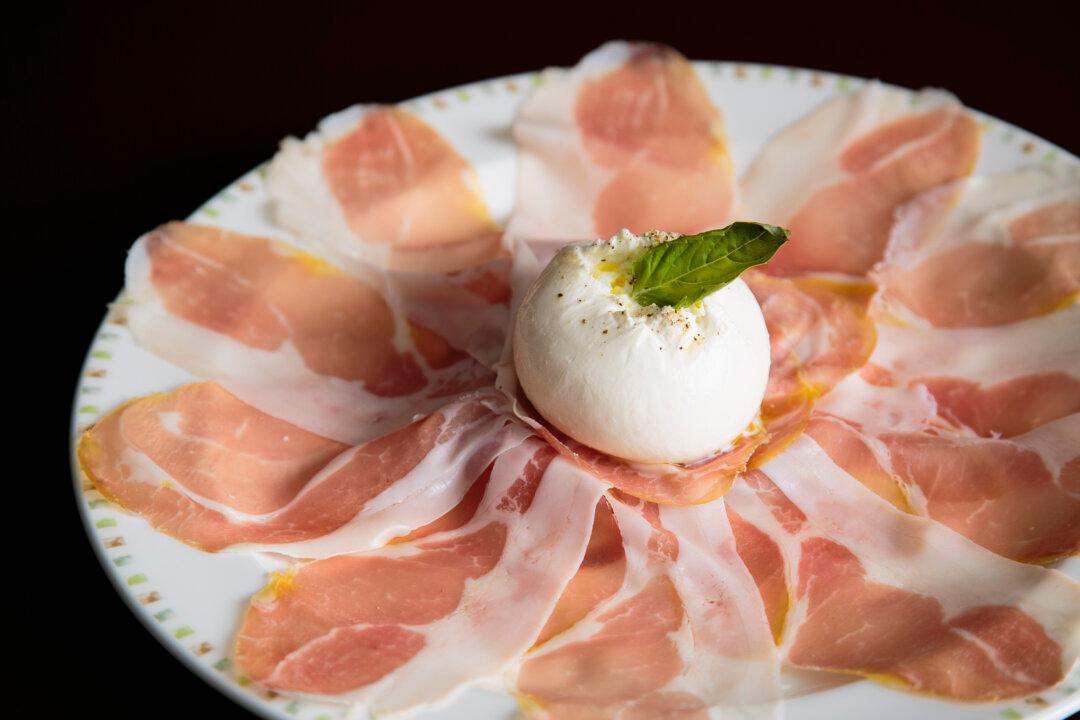As the mercury rises, the prospect of cooking in a small city kitchen can lose its appeal. There are a couple of options: take to the grill outdoors or, for a quicker, classier, and much less messy route, cobble together a few of the best ingredients summer has to offer, minus the heat.
In Italy, where summers are long and hot, prosciutto is one of the ingredients of choice.
In truth, there’s nothing easier than pairing prosciutto with some good bread and a refreshing glass of wine. Take time to seek out the best summer fruits at their peak, and you'll be rewarded with magnificent pairings: the sweetness of melons, peaches, or fresh figs, bringing out prosciutto’s subtle, complex sweetness.
Behind the cured ham is a long, storied tradition, dating back to Roman times. Principe, the leading Italian company in prosciutto production, makes its home in hilly San Daniele—in the northeast region of Friuli-Venezia Giulia, renowned for a microclimate that blesses the cured meats with breezes from both the Carnic Alps and the Adriatic.
The origins of the company go back to Stefano Dukcevich, who escaped with his family from Yugoslavia in 1945 and settled in Trieste, Italy. With some borrowed money to rent a warehouse, he started making Vienna sausages and smoked hams with recipes dating back to the Austro-Hungarian empire.
“He would wake up at 3 a.m. every morning to select, debone, grind the best cuts of meat,” said his grandson Vladimir Dukcevich, now CEO of the company.
While selling his smoked ham, he chanced upon San Daniele, where he built his new plant. “He fell in love with that land, where prosciutto had been dry-cured for centuries,” said Dukcevich.
Once business took off, and still to this today, it’s been hard to keep up with increasing demand, Dukcevich added. Prosciutto has grown popular abroad—particularly in Japan—and it has found a home in other cuisines (think Hawaiian sushi rolls with prosciutto).
Impressively, Principe’s methods remain artisanal, and to say the least, time-consuming, at a minimum of 400 days for the U.S. market for each leg of ham. Longer curing produces a richer and more aromatic flavor in this sweet and tender prosciutto.
Dukcevich, who is also president of the Consorzio del Prosciutto di San Daniele, also attributes the flavor and texture to the way the pigs are raised. “If I may borrow a phrase normally applied to humans; Pigs are what they eat. Since they eat the best feed in a humane environment, the meat is sweeter with a melt-in-your-mouth texture.”
In the United States, the best-selling prosciuttos are the San Daniele Prosciutto Black Label and the Prosciutto di Parma Black Label, which are both aged a minimum of 16 months.
Dukcevich, who said, “All I’ve ever known is prosciutto,” enjoys different ways of eating it depending on his mood. “Whether it is with cool, sweet melons, or on a warm baguette, paired with a fine Italian wine or artisanal beer, a risotto ingredient, or simply by the slice, I love them all.”
Easy prosciutto recipes for summer:
Prosciutto Amatriciano With Arugula and White Peaches
Prosciutto di San Daniele With Melon in Port
Prosciutto di San Daniele, Fig, and Pecorino Roses





